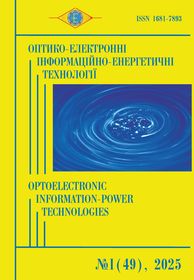Research on melanoma depth of invasion prediction method
DOI:
https://doi.org/10.31649/1681-7893-2025-49-1-147-156Keywords:
Melanoma, Depth of Invasion, Convolutional Neural Network, Morphological Processing, EfficientNetB0Abstract
Melanoma, a highly malignant skin tumor, relies on its Depth of Invasion (DoI) as a critical metric for assessing tumor malignancy, predicting patient prognosis, and guiding treatment strategies. Traditional DoI measurement methods are manual, time-consuming, and prone to errors due to complex tissue morphologies and the need for fine annotations. This study introduces a novel Convolutional Neural Network (CNN)-based framework that integrates image patch classification with morphological processing to achieve high-precision DoI prediction under coarse annotations.
The approach comprises four modules: pathology tissue differentiation using Otsu thresholding and morphological operations, lesion and epidermal region identification via EfficientNetB0 classification, and DoI measurement through least-squares boundary fitting. Experimental results on a melanoma dataset demonstrate a Mean Absolute Error (MAE) of 0.503 mm and a Root Mean Square Error (RMSE) of 0.169 mm, significantly outperforming traditional segmentation networks such as UNet and Attention-UNet. This method provides a robust and efficient solution for automated melanoma diagnosis, with substantial potential for clinical translation.
References
Breslow, A. "Thickness, cross-sectional areas and depth of invasion in the prognosis of cutaneous melanoma." Annals of Surgery, 172(5), 902-908, 1970.
Elder, D. E., et al. "Pathology of melanoma." Surgical Oncology Clinics of North America, 29(3), 337-359, 2020.
Balch, C. M., et al. "Final version of 2009 AJCC melanoma staging and classification." Journal of Clinical Oncology, 27(36), 6199-6206, 2009.
Menzies, S. W., et al. "The performance of SolarScan: an automated dermoscopy image analysis instrument for the diagnosis of primary melanoma." Archives of Dermatology, 141(11), 1388-1396, 2005.
Litjens, G., et al. "A survey on deep learning in medical image analysis." Medical Image Analysis, 42, 60-88, 2017.
Esteva, A., et al. "Dermatologist-level classification of skin cancer with deep neural networks." Nature, 542(7639), 115-118, 2017.
Oktay, O., et al. "Attention U-Net: Learning where to look for the pancreas." arXiv preprint arXiv:1804.03999, 2018.
Noroozi, N., Yassi, M., and Miri, M. S. "Threshold-based melanoma invasion depth measurement." Proc. SPIE Medical Imaging, 2021, 1-8.
Hausdorff, F. "Set theory." Chelsea Publishing Company, 1957.
Ronneberger, O., Fischer, P., and Brox, T. "U-Net: Convolutional networks for biomedical image segmentation." Proc. Int. Conf. Medical Image Computing and Computer-Assisted Intervention (MICCAI), 2015, 234-241.
Zhou, Z., Siddiquee, M. M. R., Tajbakhsh, N., and Liang, J. "UNet++: A nested U-Net architecture for medical image segmentation." Deep Learning in Medical Image Analysis and Multimodal Learning for Clinical Decision Support, 2018, 3-11.
Pathak, D., et al. "Context encoders: Feature learning by inpainting." Proc. IEEE Conf. Computer Vision and Pattern Recognition (CVPR), 2016, 2536-2544.
Tan, M., and Le, Q. V. "EfficientNet: Rethinking model scaling for convolutional neural networks." Proc. Int. Conf. Machine Learning (ICML), 2019, 6105-6114.
Otsu, N. "A threshold selection method from gray-level histograms." IEEE Trans. Syst., Man, Cybern., 9(1), 62-66, 1979.
Zhang, Z., Liu, Q., and Wang, Y. "R2U-Net: Recurrent residual convolutional neural network for medical image segmentation." IEEE J. Biomedical and Health Informatics, 22(4), 1058-1066, 2018.
Janowczyk, A., and Madabhushi, A. "Deep learning for digital pathology image analysis: A comprehensive tutorial with selected use cases." J. Pathology Informatics, 7(1), 29, 2016.
Dosovitskiy, A., et al. "An image is worth 16x16 words: Transformers for image recognition at scale." arXiv preprint arXiv:2010.11929, 2020.
Pavlov S. V. Information Technology in Medical Diagnostics //Waldemar Wójcik, Andrzej Smolarz, July 11, 2017 by CRC Press - 210 Pages.
Wójcik W., Pavlov S., Kalimoldayev M. Information Technology in Medical Diagnostics II. London: (2019). Taylor & Francis Group, CRC Press, Balkema book. – 336 Pages.
Downloads
-
PDF
Downloads: 38
Published
How to Cite
Issue
Section
License
Автори, які публікуються у цьому журналі, погоджуються з наступними умовами:- Автори залишають за собою право на авторство своєї роботи та передають журналу право першої публікації цієї роботи на умовах ліцензії Creative Commons Attribution License, котра дозволяє іншим особам вільно розповсюджувати опубліковану роботу з обов'язковим посиланням на авторів оригінальної роботи та першу публікацію роботи у цьому журналі.
- Автори мають право укладати самостійні додаткові угоди щодо неексклюзивного розповсюдження роботи у тому вигляді, в якому вона була опублікована цим журналом (наприклад, розміщувати роботу в електронному сховищі установи або публікувати у складі монографії), за умови збереження посилання на першу публікацію роботи у цьому журналі.
- Політика журналу дозволяє і заохочує розміщення авторами в мережі Інтернет (наприклад, у сховищах установ або на особистих веб-сайтах) рукопису роботи, як до подання цього рукопису до редакції, так і під час його редакційного опрацювання, оскільки це сприяє виникненню продуктивної наукової дискусії та позитивно позначається на оперативності та динаміці цитування опублікованої роботи (див. The Effect of Open Access).


